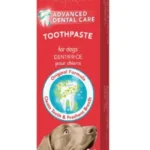If you’re a pet owner, chances are you wonder “Does dry dog food go bad if left out?” This is a common question, and the answer is a bit more complex than a simple yes or no. Here is what you need to know.
The Shelf Life of Dry Dog Food
Dry dog food has a shelf life that typically ranges from one year to two years from its production date. This is according to the U.S. Food and Drug Administration. This is assuming the food is unopened and well-stored.
If the dry dog food is left open, its nutritional value begins to degrade. The fats in the food can start to oxidize, leading to a rancid smell and potentially making your pet ill if consumed. It’s best to keep the food stored properly in a cool, dry place.
Comparatively, wet dog food has a much shorter lifespan. As soon as you open wet dog food, you need to refrigerate it and have your dog consume it within a couple of days. This is unlike dry food, which you can leave out for longer periods.
Does Dry Dog Food Go Bad if Left Out Overnight?
Leaving dry dog food out overnight doesn’t immediately spoil it. However, the food begins to lose its freshness and nutritional value when exposed to air for a long period. Although dry dog food can typically sit out for a few days without going bad, you should avoid leaving it out. Leaving it out decreases the food’s nutritional value due to the exposure to air and humidity.
Dog food left out overnight is safe for your pet to consume safely by your pet as it doesn’t spoil immediately. However, it begins to lose its freshness and nutritional value.
Common Mistakes to Avoid
Some common mistakes include storing dry dog food in humid areas, leaving the bag open, or transferring the food to non-airtight containers. These mistakes can shorten the food’s shelf life and decrease its nutritional value.
Storing dry dog food in humid areas creates an environment that encourages the growth of mold and bacteria, which can render the food unsafe for your pet. Leaving the bag open exposes the food to air, which hastens the oxidation process, leading to the food becoming rancid and losing its nutritional value.
Furthermore, using non-airtight containers can allow moisture, pests, and contaminants to infiltrate the food. The original dog food packaging has protective layers to maintain freshness and prevent contamination. By transferring the food to another container without the same protective qualities, you risk compromising the food’s shelf life and quality. This could potentially affect your pet’s health.
How to Store Dry Dog Food
When storing dry dog food, there are a few key steps to ensure freshness and maintain nutritional value. Always keep the food in its original bag, as it helps preserve the food’s quality for the longest time possible.
If you wish to use a storage container for convenience, place the whole bag into the container instead of pouring the food directly into it. This helps prevent the food’s fats from sticking to the sides of the container and becoming rancid.
Ensure that the lid is airtight and the container is in a cool, dry place away from sunlight. Regularly check the expiration date on the package and aim to use the food before this date. Never mix old food with new food, as this can lead to the spread of bacteria. Instead, always use a clean scoop to serve your pet’s meals. By following these guidelines, you can ensure your pet is always receiving fresh, nutritious food.
Take Away
Store your food in a cool and dry environment, ideally in its original packaging. The original bag is designed to preserve freshness and nutritional value even for large 100lb dog food. If you need to transfer it to a different container, make sure it’s airtight.





